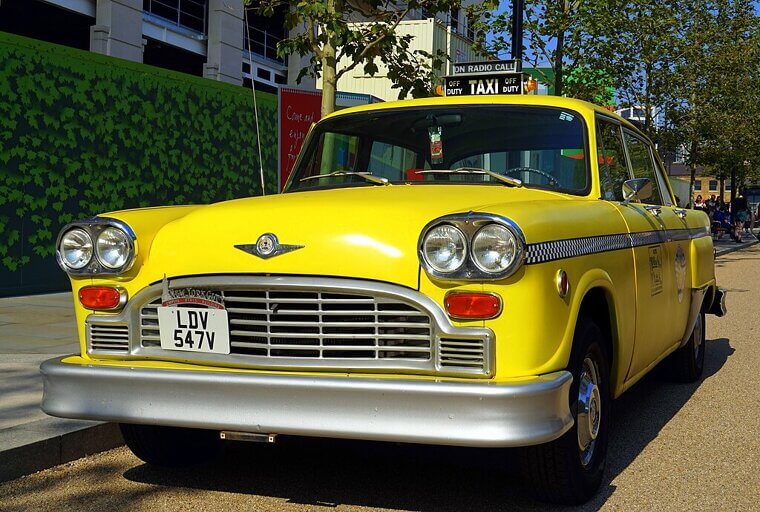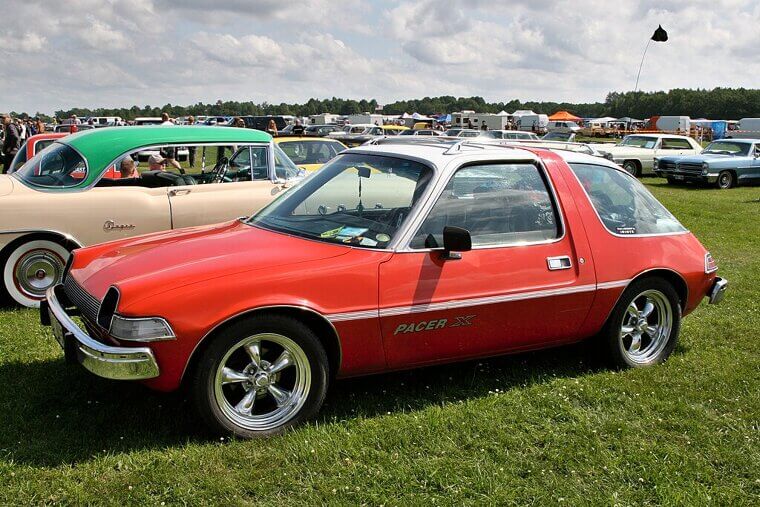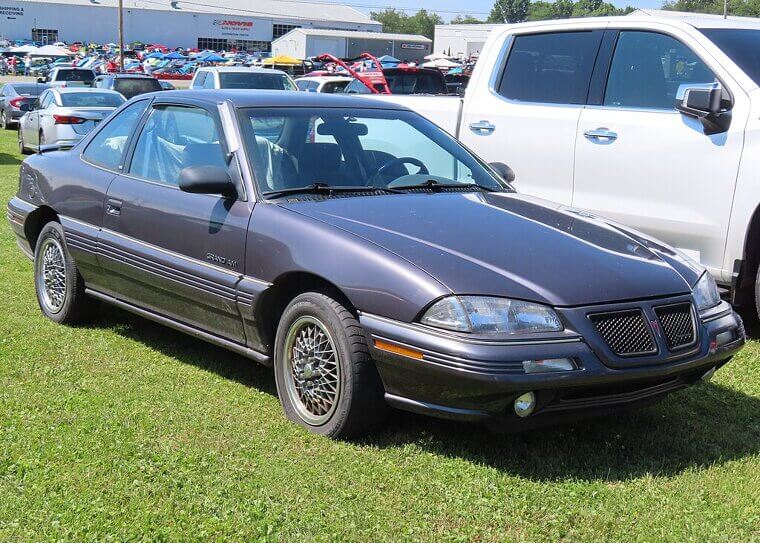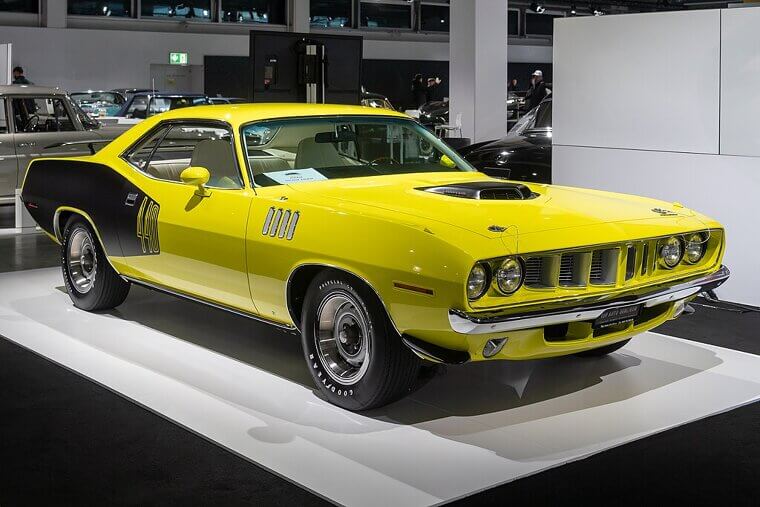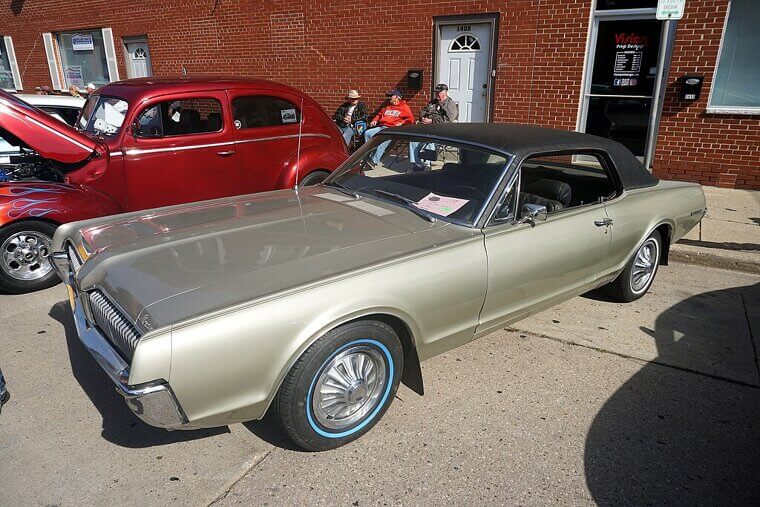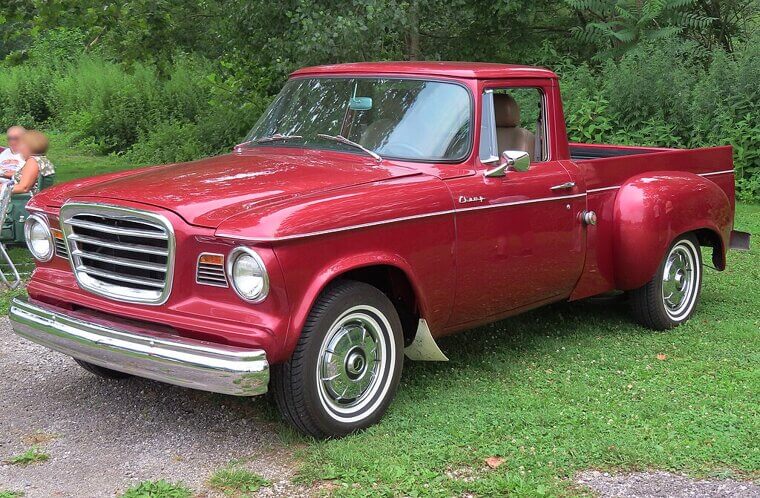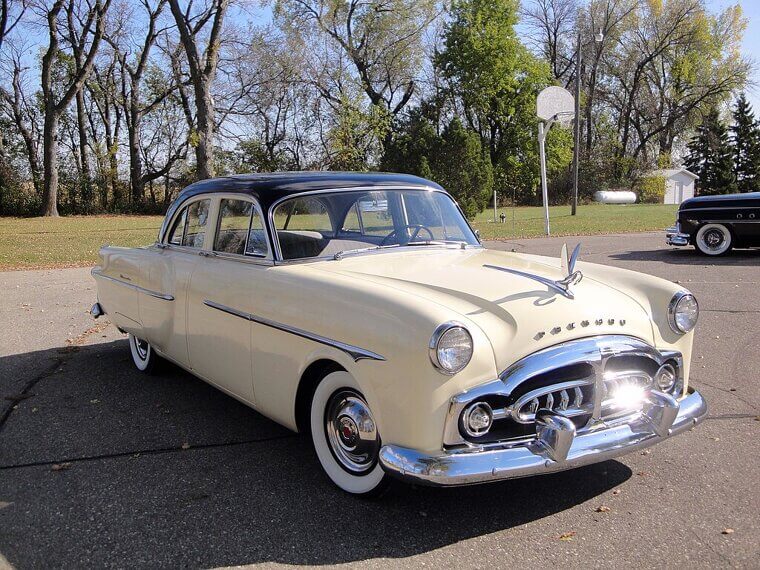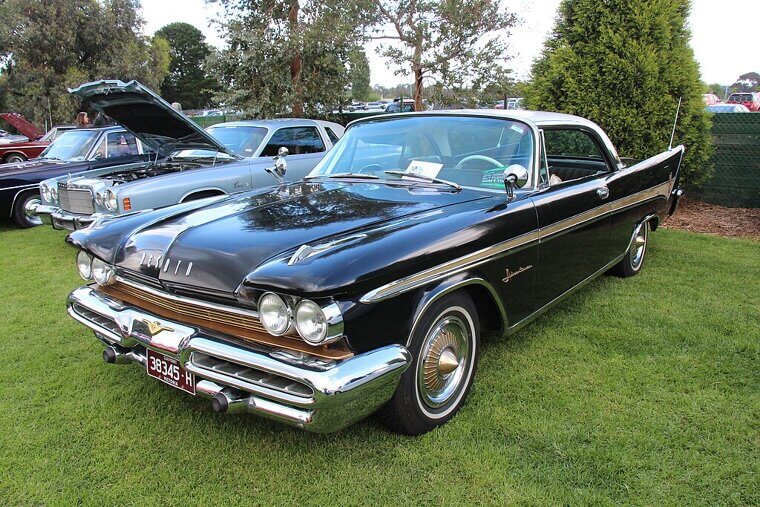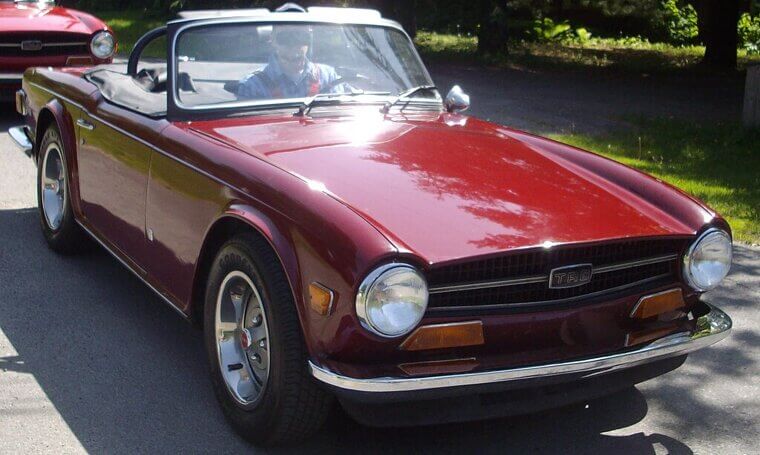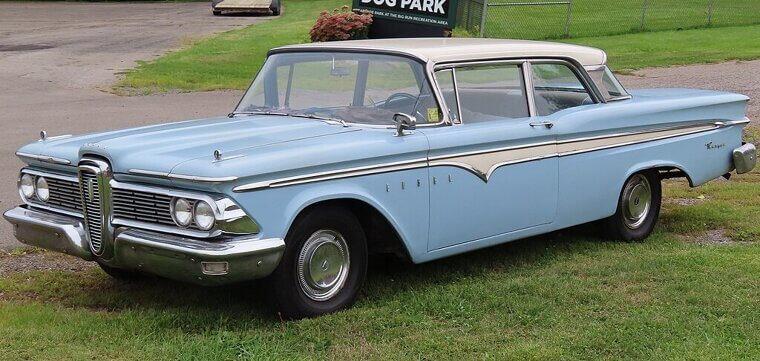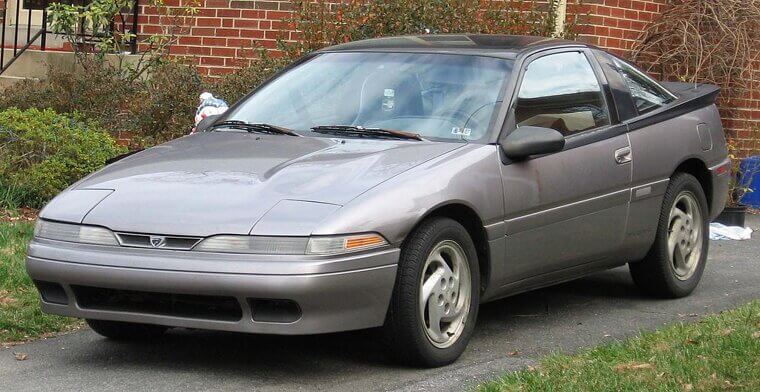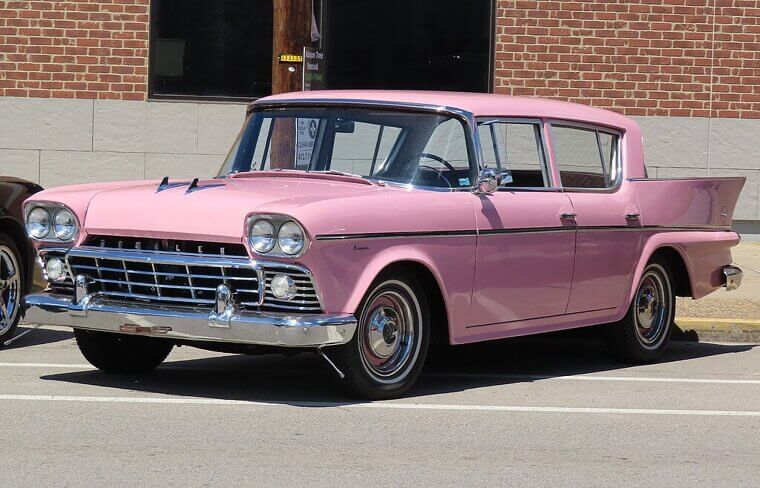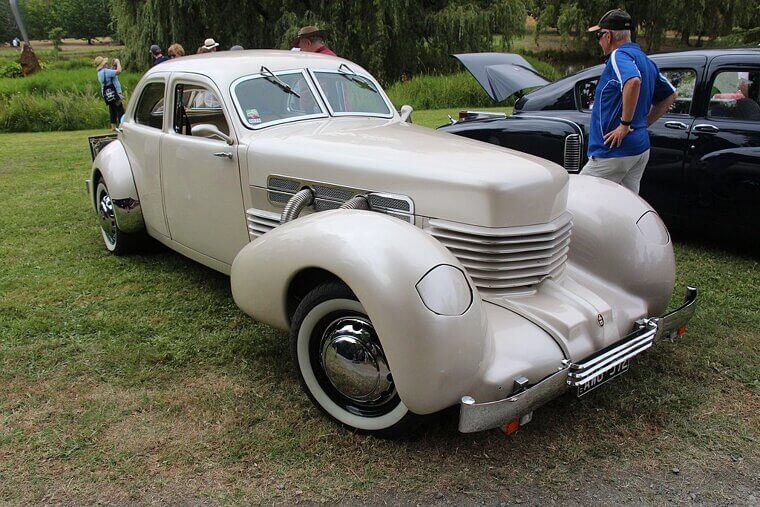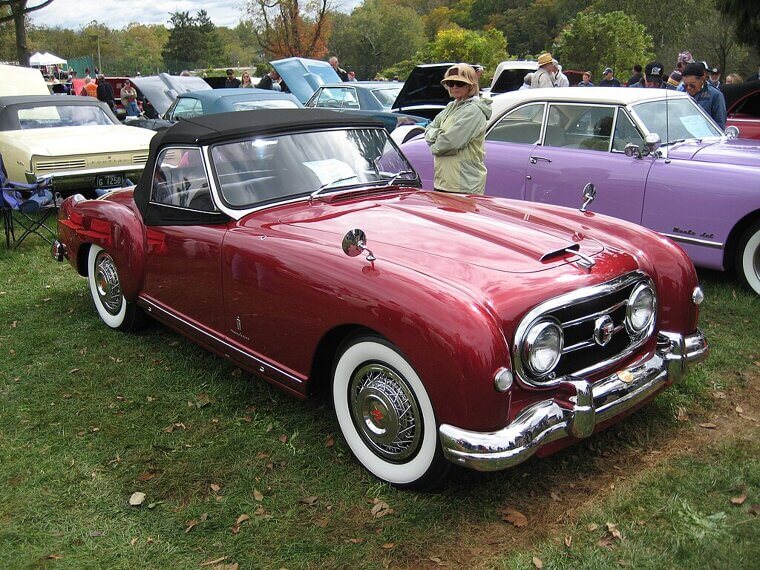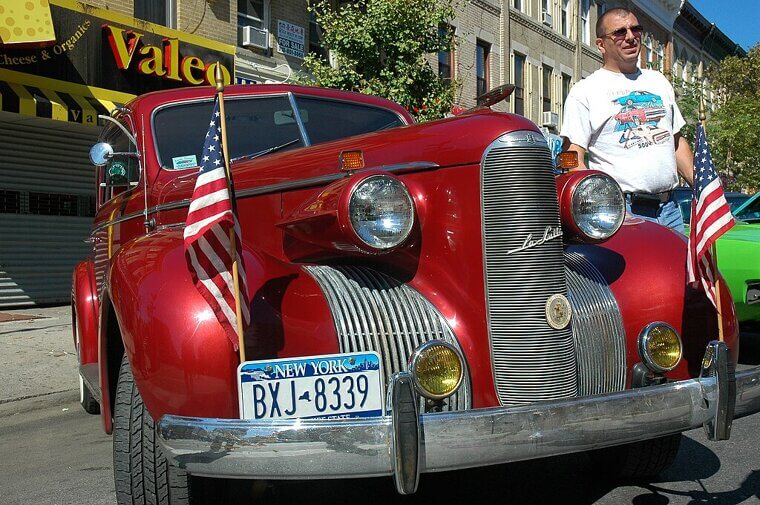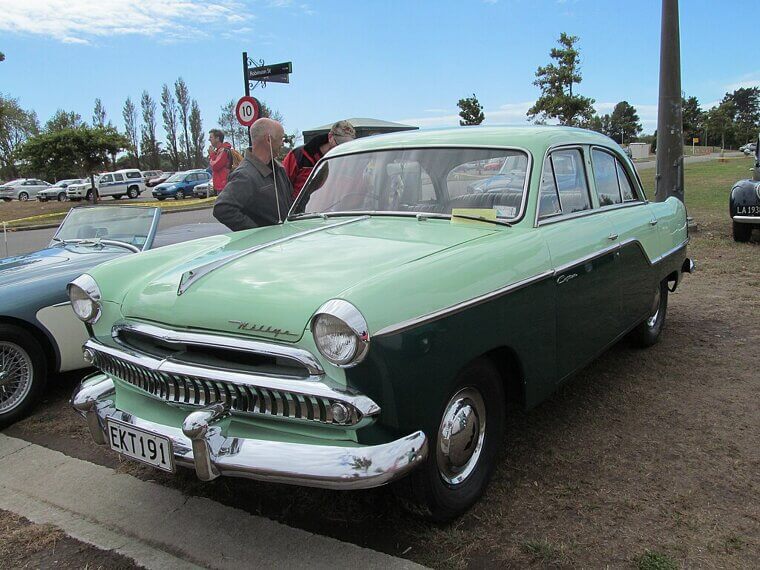Checker
Checker is forever immortalized as the New York taxi: boxy, functional, and instantly recognizable. Its utilitarian design kept fares rolling, yet private buyers were indifferent. Safety regulations and dwindling demand ended production in 1982. Checkers remain iconic symbols of urban America, appearing in films, photos, and collector garages. They remind enthusiasts that some cars transcend sales charts to become cultural landmarks and enduring symbols of city life.
AMC (American Motors Corporation)
AMC tried to be the automotive equivalent of David in a world of Goliath car makers, creating quirky, compact vehicles that were ahead of their time. The Gremlin’s oddball charm and the Pacer’s bubble shape became cult icons, while the AMC Hornet appealed to practical buyers. Yet despite clever marketing and engineering innovation, AMC couldn’t muscle through Detroit’s giants. Eventually, Jeep carried the legacy forward, leaving the rest of AMC to fade into collector lore becoming lively discussions at car shows and online forums.
Pontiac
Pontiac, the “wide-track” dream of American car culture, promised performance and style at a price that didn’t break the bank. Renowned muscle cars like the GTO and Firebird roared onto streets, in movies, and into enthusiasts’ hearts. But economic downturns, stricter emissions rules, and GM consolidation killed the brand in 2010. Today, Pontiac lives on in classic car gatherings, posters, and the nostalgic roar of a V8, a symbol of America’s love affair with speed, style, and slightly rebellious automotive personality.
Oldsmobile
Oldsmobile: the pioneer with flair and innovation, giving us the Rocket V8, the Jetstar, and over a century of automotive presence. As SUVs and crossovers captured buyers’ attention, Oldsmobile’s sedate elegance couldn’t keep pace and its reputation became dated. GM retired the brand in 2004, leaving collectors with gems like the Toronado and Delta 88. Its influence survives in design cues and remembered reliability, a quiet reminder that understated luxury can leave a lasting mark… even if it doesn’t survive market turbulence.
Plymouth
Plymouth, Chrysler’s everyman brand, once offered everything from the sleek Barracuda to the reliable Valiant. Its approachable, quirky designs gave it a charm that appealed to families and first-time buyers. By the ’90s, competition from Dodge and Chrysler eroded its niche. Retired in 2001, Plymouth now lives on in classic car meets, enthusiast blogs, and memories of quirky coupes that somehow always stood out, proving that sometimes practicality and personality can make a lasting impression long after a badge disappears.
Mercury
Mercury promised refinement beyond Ford, with less pretension than Lincoln. The Cougar’s feline charm, the Sable’s aerodynamic elegance, and occasional sporty trims charmed drivers, yet overlapping Ford models and changing tastes doomed the brand. Retired quietly in 2010, Mercury left a niche for those who appreciated the in-between: a car with just enough personality to matter. Its legacy survives in collector circles and occasional nostalgic mentions, a reminder that subtle refinement can be just as memorable as full-blown luxury or muscle.
Studebaker
Studebaker evolved from wagons to quirky, stylish cars like the Avanti, turning heads in the process. Post-war optimism couldn’t overcome competition from the Big Three and rising production costs, so by 1967 the last Studebaker rolled off the line. Today, enthusiasts celebrate its daring designs, forward-thinking engineering, and oddball charm. Its influence lives on in vintage car clubs and collector shows, proof that a little imagination can make a brand beloved, even if survival proves impossible in the ruthless automotive jungle.
Packard
Packard, the pre-war symbol of luxury, oozed elegance with every chrome-laden masterpiece. “Ask the Man Who Owns One” suggested exclusivity and class, and models like the Caribbean and Clipper embodied refinement. Yet postwar mergers, missteps, and a changing market eroded Packard’s stature. By 1958, it was gone, leaving collectors to savor its finest models, enjoy restoration projects, and remember an era when sophistication had a clear, gleaming nameplate on the grille (and the world noticed).
DeSoto
DeSoto, Chrysler’s adventurous offspring, dazzled with bold postwar styling and innovation. Its late-’50s models were flamboyant, sporting fins, chrome, and audacity in equal measure, appealing to trendsetters and traditional buyers alike. Market confusion, declining sales, and overlapping brands ended the DeSoto line in 1961. Today, DeSoto is a collector’s delight, admired for daring aesthetics and proof that style and innovation can capture the imagination - even if history ultimately turns the page on a brand.
Hudson
Hudson was the underdog with engineering flair, famously introducing the “step-down” design and Hornet performance that won races. Innovative suspension and lightweight construction made it competitive on the track and appealing to practical buyers. But mergers and Detroit’s dominance swallowed the brand by 1954. Collectors still treasure Hudsons for their innovation, distinctive style, and historic racing legacy, proof that being ahead of the curve can be thrilling, even if it doesn’t guarantee survival on showroom floors.
Kaiser
Kaiser embodied postwar optimism, producing affordable, stylish cars for returning soldiers and families. Its aerodynamic shapes and compact designs were early experiments in innovation, while models like the Manhattan and Henry J offered practicality and style. Limited distribution, stiff competition, and conservative public taste doomed the brand. By 1955, Kaiser vanished, leaving rare classics, automotive museums, and whispers of postwar ambition; a testament to daring design that inspired collectors decades later.
Edsel
Edsel was ambitious, hyped, and instantly infamous as a cautionary tale of timing, design, and economics. The Pacer and Citation models aimed to wow, but polarizing styling, shaky quality control, and a recession led to a rapid demise in 1960. Yet Edsel’s quirky designs and bold marketing endure, making it a collector’s oddball, a conversation starter, and a symbol of the risks brands take when shooting for the stars (even if the result is legendary failure).
Hummer (original Civilian Line)
Hummer’s giant, unapologetic presence thrilled drivers seeking off-road audacity and military-inspired style. Gas prices, environmental concerns, and shifting public tastes eventually grounded the brand, retired by GM in 2010. Still, the Hummer remains a cultural icon, a roaring statement of excess, adventure, and engineering bravado. Enthusiasts celebrate restored Humvees and civilian H1s as modern relics of audacity and sheer automotive fun.
Eagle
Eagle was Chrysler’s quirky, import-inspired performance brand, offering sedans, wagons, and crossovers with adventurous flair. Enthusiasts loved its slightly offbeat styling and fun-to-drive ethos, yet mainstream America largely ignored it. By 1998, Eagle quietly disappeared. Today, it survives in car club stories and classic car gatherings as a cult favorite, a reminder that being different doesn’t always pay the bills… but it can earn a devoted following!
Saturn
Saturn promised innovation, reliability, and a dealer experience that felt personal, charming suburban buyers in the 1990s. Its plastic-body panels and “no-haggle” pricing differentiated it, yet corporate shake-ups and a lack of exciting new models stifled growth. By 2010, GM retired the brand. Saturn remains beloved in collector circles, remembered as the car that listened, a vehicle that tried to change the relationship between buyer and brand even if reality intervened.
Rambler
Rambler championed early compact cars, practical and economical before tailfins overtook Detroit. Its clever marketing appealed to frugal families, while models like the American and Classic showed ingenuity in engineering and affordability. Yet competition from the Big Three eventually squeezed it out. By the late ’60s, Rambler was gone, leaving a legacy in small-car design and a reminder that being practical sometimes means being overlooked, even if you were ahead of the curve.
Cord
Cord was the rock star of 1930s automotive design, pioneering front-wheel drive, hidden headlights, and futuristic styling that stunned the public. Glamour and engineering innovation dazzled, yet financial troubles and the Great Depression crushed dreams. By 1937, Cord was gone. Collectors today marvel at its bold engineering, sweeping curves, and dramatic flair, a testament to daring ambition that pushed automotive design forward despite economic realities.
Nash
Nash pushed innovation with unibody construction, aerodynamic styling, and clever small-car designs like the Metropolitan. Mergers and market pressures eventually buried the brand under AMC’s umbrella. By the mid-1950s, Nash faded, leaving enthusiasts to celebrate engineering bravery, unusual design choices, and cars that were a step ahead of their time. Its legacy survives in clever solutions and collector admiration decades later.
LaSalle
LaSalle offered Cadillac’s luxury with slightly less pretension, capturing elegance in the roaring ’20s and ’30s. Distinguishing itself from Cadillac and Buick proved difficult, and it was discontinued in 1940. Today, LaSalle is a collector’s delight, admired for stylish lines, historical significance, and early luxury touches. It reminds enthusiasts that prestige isn’t just about price: it’s also about character, refinement, and personality on the road.
Willys
Willys is best known for the Jeep that helped win World War II, yet its civilian car line struggled to find a foothold postwar. Rugged vehicles lived on in the Jeep brand, while Willys faded as a separate badge. Still, Willys cars are treasured relics of durability, adventure, and clever engineering. They prove that a car’s legacy isn’t measured solely in sales, but in the spirit it inspires for generations of drivers.

